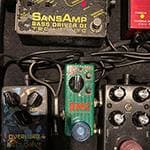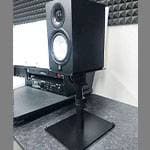"I can’t get the chords to sound right..."
"I don’t know which chords to start with..."
"I can’t change chords smoothly..."
These are some of the most common struggles I’ve heard from ukulele beginners.
In this article, I’ll introduce four beginner-friendly chords that are perfect for your first practice session, along with some helpful tips for smooth chord changes.
First, take a look at the image below.
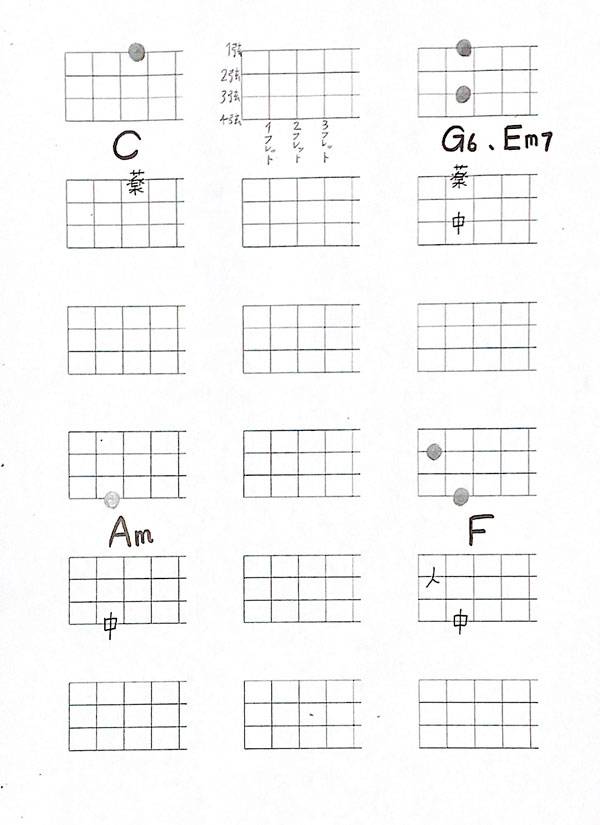
There are four chords written: C, G6, Am, and F. (G6 and Em7 are fingered the same way, so they are written in the same place.)
Memorize these four perfectly and practice changing chords quickly.
Before starting practice, here’s a little talk about chords:
There are many chords on the ukulele.
If you consider the amount of variations, open or closed shapes, and tension combinations, it’s not an exaggeration to say there are infinite possibilities.
No one remembers all the chords in the world.
So, not knowing or forgetting chords is not embarrassing at all.
First, memorize chords that are easy to play, frequently used, and connect well to future practice.
Those are the four chords I will introduce in this article!
① C chord

Press the 3rd fret of the 1st string with your ring finger.
That’s all there is to it. It’s easy, right?
However, even though the C chord looks easy and is easy to play, there are two important points to be careful of when playing with your left hand:
1.Press with your finger upright.
2.Keep the fingers that aren’t pressing close to the fretboard.
Press with the fingertip, not the pad of your finger.
Check that your fingernail is facing your own face.
Although only the ring finger is pressing down, be careful that the other fingers aren’t spreading out awkwardly.

Please keep these two points in mind not only for the C chord but for all the chords I introduce from now on.
② Am chord
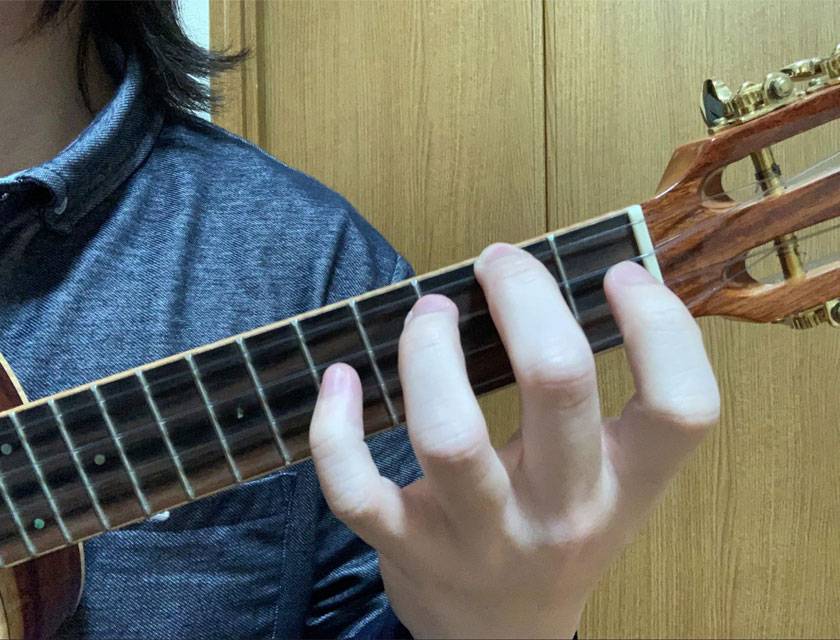
Press the 2nd fret of the 4th string with your middle finger.
Am is read as “A minor.”
Once you press it, try strumming all four strings.
Did all four strings sound clear?
If the pad of your middle finger touches the 3rd string, it won’t ring properly.
Make sure to press down with your fingertip so your finger doesn’t lie flat.
③ F chord
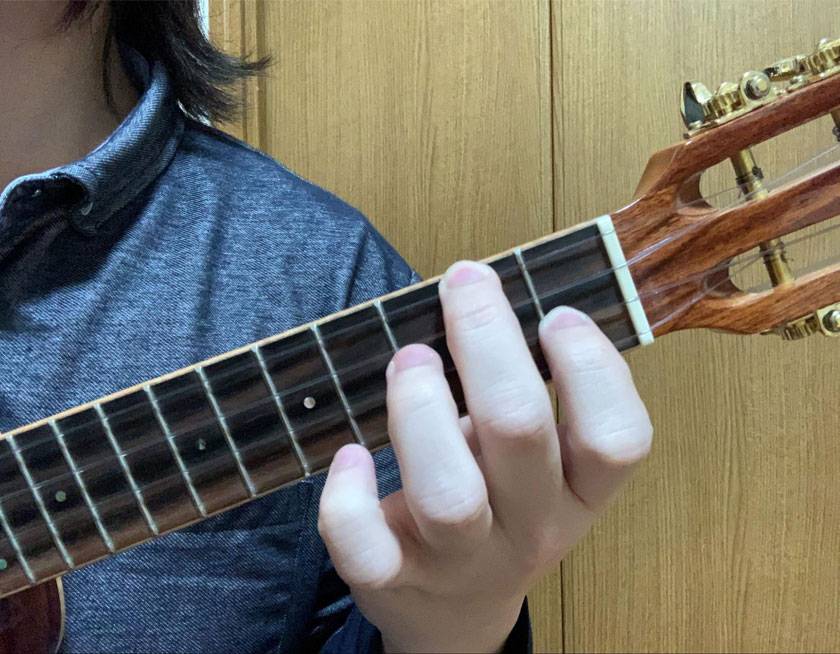
Press the 2nd fret of the 4th string with your middle finger, and the 1st fret of the 2nd string with your index finger.
Here, you use two fingers.
As always, press down with your fingertips.
Refer to the photo for the correct finger placement, and make sure all the strings sound clear.
④ G6 chord
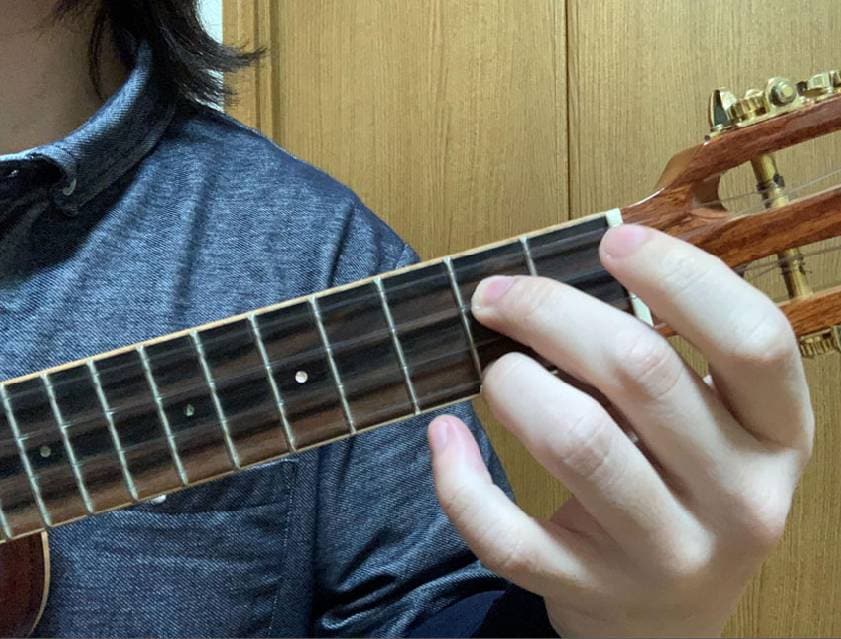
Press the 2nd fret of the 3rd string with your middle finger, and the 2nd fret of the 1st string with your ring finger.
G6 is read as “G six.”
After pressing your fingers down, strum all the strings and check that the 2nd string rings clearly.
If it doesn’t, slightly adjust the position of your middle finger upwards.
Try to press between the 3rd and 4th strings with your middle finger.
In beginner books, articles, or videos, G6 rarely appears.
Usually, G or G7 is recommended instead.
However, G and G7 require pressing with three fingers.
From experience, these chords are harder for beginners to hold.
Compared to those, G6 only uses two fingers and shares the same shape as Em7, so it’s a win-win.
Learn how to play these four chords: C, Am, F, and G6.
Finally, I’ll introduce how to change chords and some tips.
⑤ Tips for chord changes
Let’s get straight to the point:
Don’t move fingers that don’t need to move and move quickly with minimal motion.
These are the two key points.
For example, when changing from C to G6:
Move your ring finger from the 3rd fret of the 1st string to the 2nd fret, and press the 2nd fret of the 3rd string with your middle finger.
That completes the C → G6 chord change.
When changing from Am to F:
Keep pressing the 2nd fret of the 4th string, and add your index finger to the 1st fret of the 2nd string.
The only difference between Am and F is whether or not you have your index finger pressing down.
To summarize
How was it?
In this article, I wrote about finger placement and tips in detail, but I understand that it might be difficult for beginners to consciously apply everything all at once while playing.
The most important thing is to "enjoy playing!"
It’s totally okay if strange sounds come out or some strings don’t ring clearly.
Rather than worrying about that, challenge yourself with songs you like, try out various chords, and find some sounds you enjoy.
Then, when you feel like improving further, remember what you read here.
If you find my advice even a little bit useful, please use it for yourself and share it with those around you.
Thank you very much for reading until the end.
The “sound & person” column is made up of contributions from you.
For details about contributing, click here.






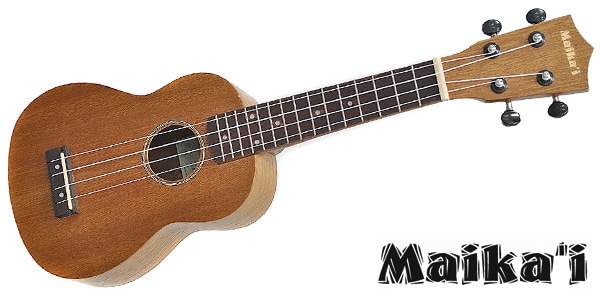

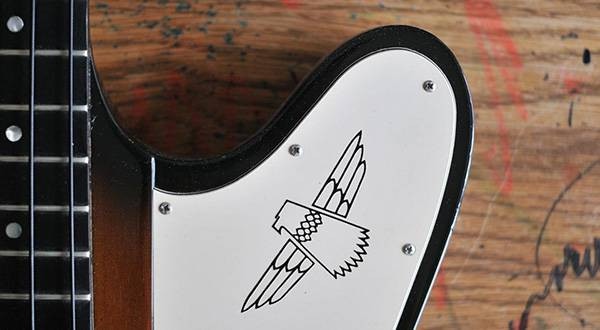







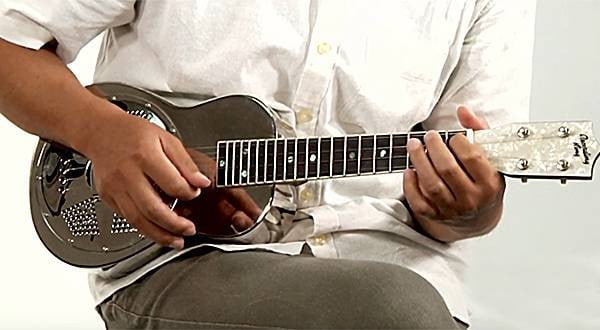
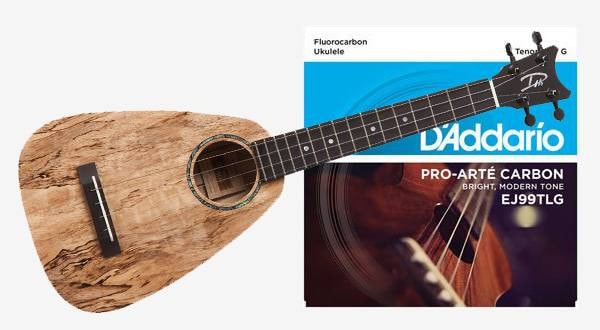
 サウンドハウス社員が選ぶ 『おもしろ商品』はコレだ!
サウンドハウス社員が選ぶ 『おもしろ商品』はコレだ!
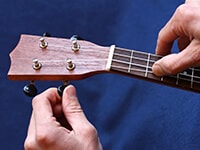 ウクレレのチューニング方法
ウクレレのチューニング方法
 ウクレレの各部名称
ウクレレの各部名称
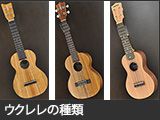 ウクレレの種類
ウクレレの種類
 ウクレレスタートガイド
ウクレレスタートガイド
 ウクレレ初心者講座
ウクレレ初心者講座





